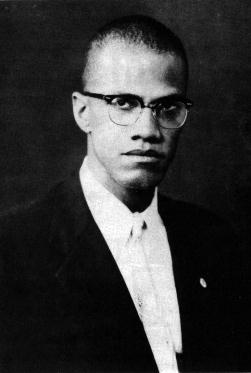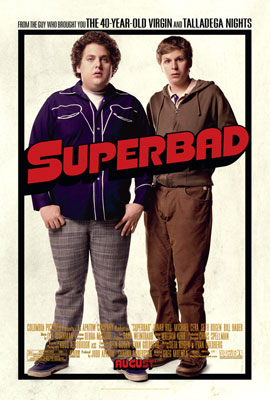Wednesday, November 16, 2005
Schizophrenic Sunday Star-Times?
A fortnight ago I was impressed when reading Cate Brett's editorial savaging TVNZ's Susan Wood in the Sunday Star-Times.
It wasn't so much the content of Brett's piece, A dose of reality for TV, that I admired just the venom with which she wrote it:
Shucks, I couldn't comment on Wood's abilities, don't watch Close Up, but Brett really got stuck in to Wood and TVNZ:
Ouch.
The Sunday Star-Times' editor was calling it as she saw it, "a laughable shambles" no less, and lambasted the TVNZ freakshow.
So I was surprised to be greeted last weekend by the front-page story - Susan Wood's angry fiance speaks out.
What? Seems rather sympathetic doesn't it?
Afterall, aren't the viewers and ordinary folks "gutted and shocked"at her pay demands and treating her "anguish and suffering" with "scorn"?
Which is it?
And how does a story, about a "competent if unexciting interviewer and host" whose dilemma is nothing more than "a laughable shambles" one week, become a front-page lead the next?
Or is it that a story become more newsworthy if your publication has an exclusive?
Here's another question, how many Sunday Star-Times front-page leads in the past year have been related to TVNZ?
And do people really care?
It wasn't so much the content of Brett's piece, A dose of reality for TV, that I admired just the venom with which she wrote it:
Taxpayers and television viewers were amazed by Susan Wood's performance on Thursday. She told an Employment Relations Authority hearing that she was "probably" worth more than the $450,000 she used to get as Close Up presenter. And she was "gutted" and "shocked" when her boss Bill Ralston proposed cutting her annual salary by $100,000.
Viewers will be gutted and shocked that the taxpayer-funded television station would contemplate paying her so much. And as for her complaints about anguish and suffering - why, she even shouted at the kids! - ordinary folks will treat them with scorn. Wood is a competent if unexciting interviewer and host. She is certainly not worth more than $450,000, or anything like it.
Shucks, I couldn't comment on Wood's abilities, don't watch Close Up, but Brett really got stuck in to Wood and TVNZ:
This is what TVNZ's lunatic "culture of excess" has led to - and once again TVNZ will suffer odium for it. Last year, it was revealed that Judy Bailey, the mother of the nation, wanted to double her salary to $800,000 - and succeeded. After that, viewers looked at Mummy differently. Paul Holmes' sky-high wages were a continuing source of trouble; Helen Clark called them "obscene", and most sane people would agree. It won't do for TVNZ to say it was merely paying the market rate for TV stars. TVNZ dominated the market and it set the rates. It paid huge sums to autocue readers whose daily screen exposure was minimal. The result was a series of scandals, climaxing in a multi-million payout to John Hawkesby after he had worked for a few wretched weeks.
Ouch.
The Sunday Star-Times' editor was calling it as she saw it, "a laughable shambles" no less, and lambasted the TVNZ freakshow.
So I was surprised to be greeted last weekend by the front-page story - Susan Wood's angry fiance speaks out.
TVNZ presenter Susan Wood's fiance, Kevin Stanley, has attacked the state broadcaster for its treatment of his stressed partner.
Wood, who this month won an employment dispute with TVNZ over its plans to slash her pay by $100,000 to $350,000 a year, was off work last Friday and went away with Stanley for the weekend.
Her lawyer, Mai Chen, said Wood's absence was on doctor's advice and matters relating to her relationship of trust and confidence with TVNZ "remain outstanding".
Wood's future with TVNZ is expected to be decided this week.
After a bad week with the Close Up presenter, TVNZ last night missed out on major awards - including best news - to its competitor TV3 at the new Qantas Television Awards.
Stanley said Wood's leave was stress-related and "these guys have ground her down to nothing. I think her employers have absolutely underestimated the pressure that it has put on her. It has been totally unfair and unnecessary".
What? Seems rather sympathetic doesn't it?
Afterall, aren't the viewers and ordinary folks "gutted and shocked"at her pay demands and treating her "anguish and suffering" with "scorn"?
Which is it?
And how does a story, about a "competent if unexciting interviewer and host" whose dilemma is nothing more than "a laughable shambles" one week, become a front-page lead the next?
Or is it that a story become more newsworthy if your publication has an exclusive?
Here's another question, how many Sunday Star-Times front-page leads in the past year have been related to TVNZ?
And do people really care?
Comments:
Eemember there's a significant difference between an editorial and a news feature.
An editorial is opinion, preferably a strong one. Whereas a news story is expected to reflect the features/thoughts of those interviewed.
So it stands to reason they can often be a diametrically opposite ends of a spectrum.
It's kind of like the difference between the rants of a talkback radio host and the news at the top of the hour.
Here endeth the Journalism 101 lesson :)
An editorial is opinion, preferably a strong one. Whereas a news story is expected to reflect the features/thoughts of those interviewed.
So it stands to reason they can often be a diametrically opposite ends of a spectrum.
It's kind of like the difference between the rants of a talkback radio host and the news at the top of the hour.
Here endeth the Journalism 101 lesson :)
OK, sure - there's a difference between an editorial and a news story.
But isn't it a little hypocritical/cynical for a paper's editor to one week dismiss an issue as a sideshow then turn around and the next week give that same issue she was decrying front-page sympathetic prominence in an attempt to flick a few extra copies?
Surely an editor is an editor for a reason - to control the content and direction of a newspaper?
But isn't it a little hypocritical/cynical for a paper's editor to one week dismiss an issue as a sideshow then turn around and the next week give that same issue she was decrying front-page sympathetic prominence in an attempt to flick a few extra copies?
Surely an editor is an editor for a reason - to control the content and direction of a newspaper?
I forgot to mention, despite the title, the editor doesn't always write the editorial. Sometimes it's done by another senior staff member (eg the features editor).
Your argument seems to be that that the tone of the paper should always be in line with the proclivities of its editor. I'd take issue with that for no other reason that I find it blinkered an unhealthy. The wider the range of views, the more angles are being covered. To restrict a publication to one point of view smacks of bias and control.
Having said all that I actually thought the story was complete bollocks.
Your argument seems to be that that the tone of the paper should always be in line with the proclivities of its editor. I'd take issue with that for no other reason that I find it blinkered an unhealthy. The wider the range of views, the more angles are being covered. To restrict a publication to one point of view smacks of bias and control.
Having said all that I actually thought the story was complete bollocks.
Interesting ... surely though there is a difference between 'covering a range of angles' and 'being completely contradictory'.
For example, you shouldn't run an editorial urging people to vote National (irrespective of which particular individual penned it) one day, and have a glowing page one account of the re-elected Labour government the next.
Hence in 1999 the hilarious wailings of the Herald the day after Labour was elected ... "16 years of economic reform have come to an end" they cried.
For example, you shouldn't run an editorial urging people to vote National (irrespective of which particular individual penned it) one day, and have a glowing page one account of the re-elected Labour government the next.
Hence in 1999 the hilarious wailings of the Herald the day after Labour was elected ... "16 years of economic reform have come to an end" they cried.



















Post a Comment